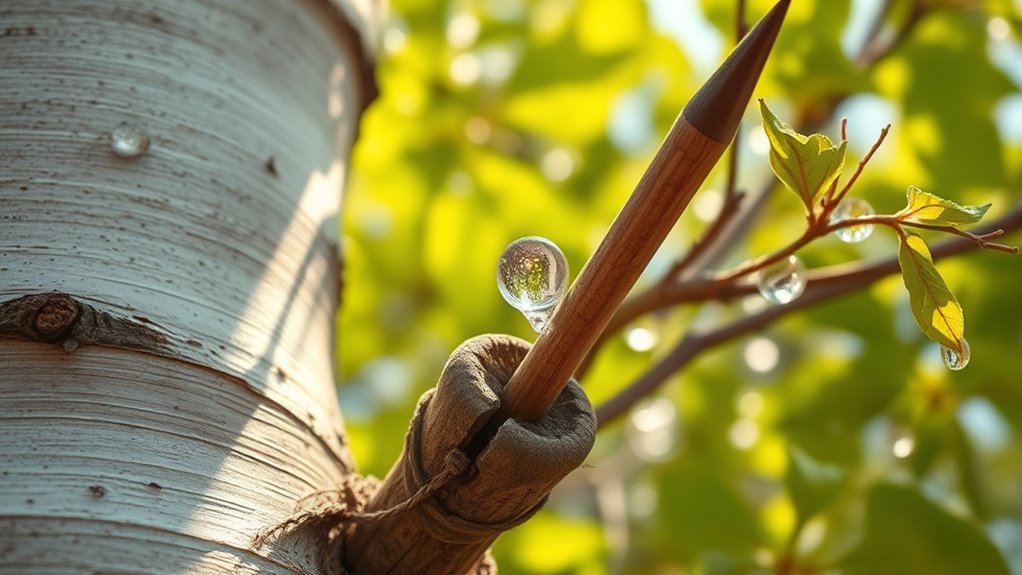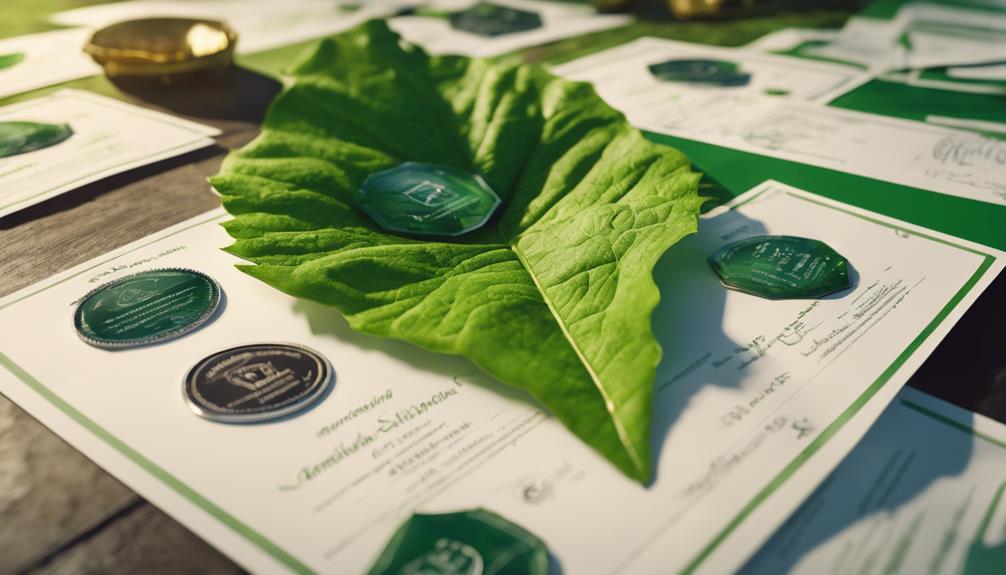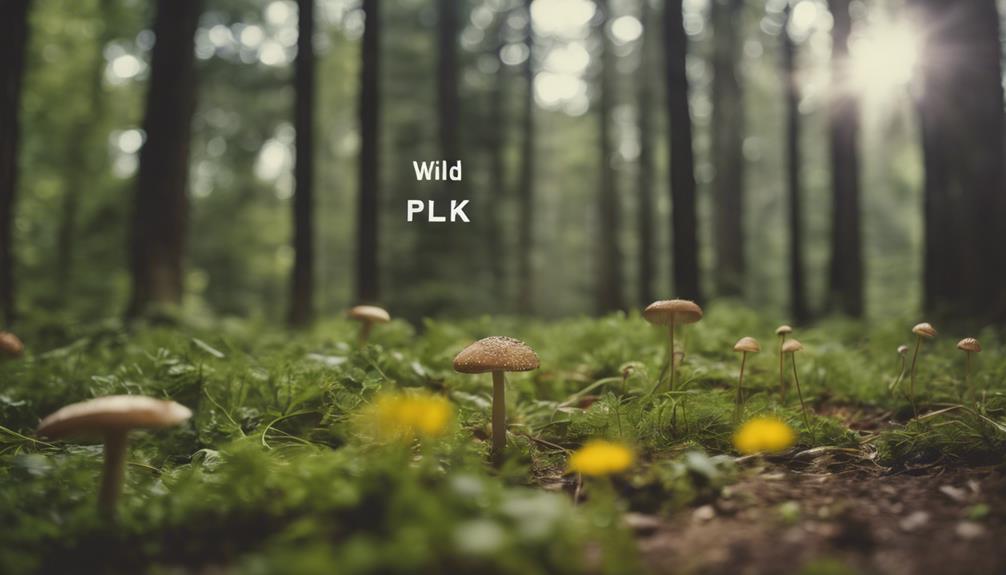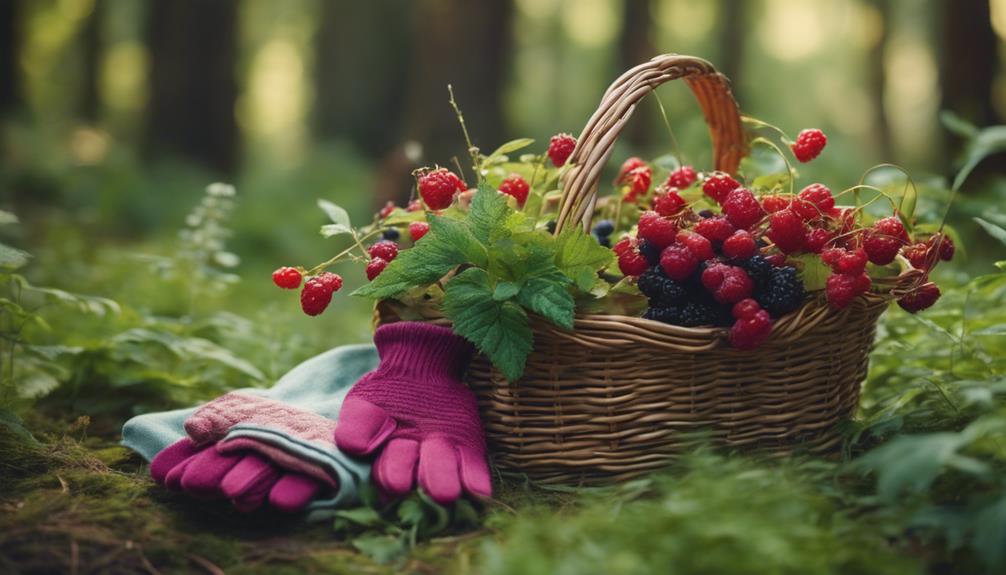To tap wild trees like maple, birch, and others for homemade sugar, you’ll need a sharp drill, food-grade containers, and taps or spiles. Drill small holes in early spring, insert taps, and let gravity do the work to collect sap. Then, boil the sap carefully until it thickens into syrup or sugar, keeping temperature in check. With some patience and practice, you’ll create unique flavors from nature’s bounty—see how to start this process step by step.
Key Takeaways
- Collect sap responsibly from trees like maple and birch using proper tapping techniques and food-grade equipment.
- Boil sap carefully to evaporate water, monitoring temperature to produce high-quality syrup.
- Different tree species yield distinctive flavors; adjust processing methods accordingly.
- Use precise temperature control and filtration to ensure pure, safe wild sugar.
- Experiment with various trees and techniques to create versatile homemade syrups and sugars.

Have you ever wondered how to create your own wild sugar at home? It’s easier than you might think, especially if you’re interested in tapping into nature’s sweet bounty. The first step is understanding tree tapping, which is the process of collecting sap from trees like maple, birch, or other native species. You’ll need a sharp drill, some spiles or taps, and food-grade containers to catch the sap. When the weather warms up in early spring, you can start by drilling a small hole into the tree’s trunk, just deep enough to insert the tap. Gravity will do the work, allowing the sap to flow into your container. It’s important to tap trees responsibly, making sure not to harm the tree or tap more than one or two times per season to sustain the health of the tree.
Once you’ve collected enough sap, the next step is syrup processing. This involves boiling the sap to evaporate excess water, concentrating the sugars into a syrup. You’ll need a large pot—preferably stainless steel—and a controlled heat source. As the sap boils, it’s essential to monitor the temperature carefully. You want it to reach about 219°F (104°C) at sea level, which indicates the syrup has achieved the right concentration. During this process, you may need to skim off foam or impurities that form on the surface. Patience is key because this process can take several hours depending on how much sap you’re processing and the ambient temperature. Stir occasionally and keep the boiling area well-ventilated to prevent accidents. Incorporating a high-quality thermometer helps ensure precise temperature control for ideal syrup consistency.
In addition to maple, you can experiment with other trees like birch, which produce a different kind of sap that requires a slightly different processing method but can be turned into unique, flavorful syrups. The key to successful syrup processing is controlling heat and avoiding burning the sap. Once you reach the right consistency, you can filter the syrup through cheesecloth or a fine strainer to remove any remaining impurities. Let the syrup cool slightly before pouring it into sterilized bottles or jars for storage. Homemade wild sugar can be enjoyed on pancakes, in teas, or as a sweetener in recipes. Creating your own wild sugar allows you to connect with nature and enjoy a rewarding process that turns simple sap into a sweet, natural treat.
Frequently Asked Questions
How Do I Identify the Best Trees for Tapping?
To identify the best trees for tapping, focus on tree identification by observing bark, leaves, and overall shape. Look for healthy, mature trees with a smooth bark surface, especially maples, birches, or other sugaring species. The sap quality depends on the tree’s health and species; maples typically produce the sweetest sap. Avoid diseased or damaged trees, as they yield lower-quality sap and can harm the tree’s health.
What Are the Safety Precautions for Sap Collection?
When collecting sap, you should always prioritize safety. Wear protective gear and guarantee proper tools to prevent injuries. Be cautious during sap boiling, as steam and hot liquids can cause burns. Avoid harming the tree; monitor its health and don’t tap the same spot repeatedly. Properly maintaining your equipment and respecting tree health helps keep your sap collection safe and sustainable for future seasons.
Can Sap Be Harvested Year-Round?
You might wonder if you can harvest sap year-round. Typically, sap collection occurs during specific seasons when trees like maples and birches are actively flowing. Outside these times, sap tends to stop or become less accessible, but you can explore alternative sap sources like certain trees or shrubs. When you do harvest, use proper sap boiling methods to concentrate the sap safely and enjoy your wild sugar creations year-round.
How Do I Prevent Sap Spoilage During Storage?
To prevent sap spoilage during storage, focus on spoilage prevention through proper techniques. Keep your sap cold, ideally below 40°F, to slow down sap fermentation. Use clean, sanitized containers to avoid contamination, and fill them completely to minimize air exposure. Regularly check for signs of spoilage, like off-odors or cloudiness. By maintaining proper storage conditions, you can extend freshness and reduce the risk of fermentation, ensuring your sap stays sweet and safe.
What Equipment Is Essential for DIY Sap Tapping?
To start your DIY sap tapping, you’ll need essential equipment like clean spiles, food-grade buckets or bags, and a drill for tapping trees. These tools are crucial for effective sap collection methods, ensuring you gather sap efficiently and safely. Make sure your equipment is durable and sanitized to prevent contamination. With the right gear, you’ll enjoy a smooth process from tapping to storing your sweet harvest.
Conclusion
Now that you’ve explored the art of tapping trees and transforming their sap into sweet delight, you’re like a wild sugar pioneer forging your own path through nature’s pantry. With patience and care, you can turn simple sap into a syrup as rich as a hidden treasure. Embrace the journey, for each drop you collect is a proof to your connection with the wild, transforming fleeting moments into a lasting, flavorful legacy.










